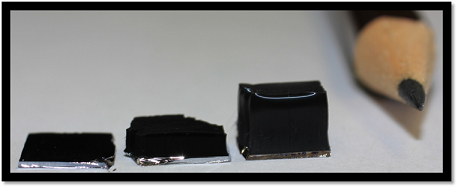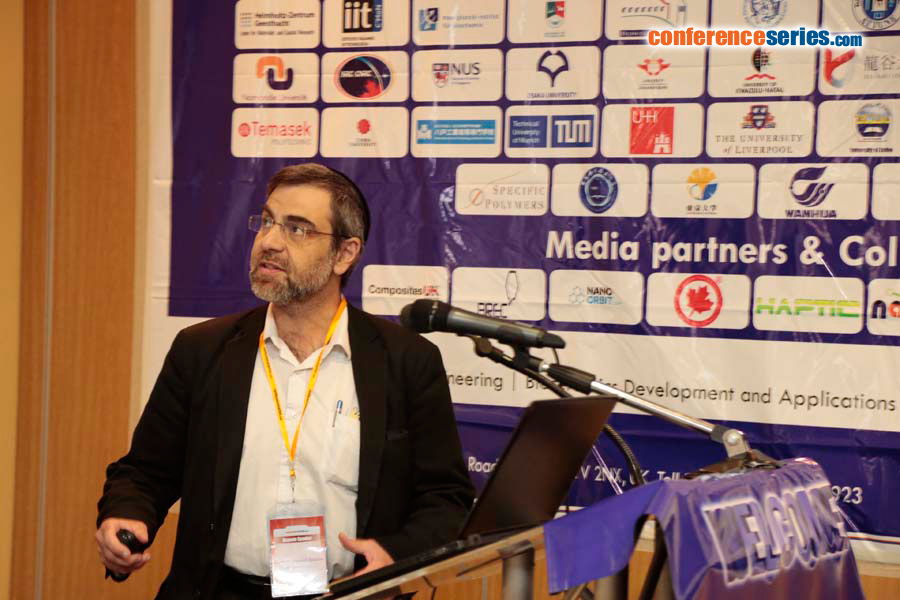
Gilbert Daniel Nessim
Bar Ilan University, Israel
Title: Towards the growth of 3D forests of carbon nanotubes: Selective height control using reservoirs and overlayers
Biography
Biography: Gilbert Daniel Nessim
Abstract
Despite the massive progress achieved in the growth of carbon nanotube (CNT) forests on substrate, besides lithographic patterning of the catalyst, little has been done to selectively (locally) control CNT height. Varying process parameters, gases, catalysts, or overlayer materials uniformly affects CNT height over the whole substrate surface. We will show here how we can locally control CNT height, from no CNTs to up to 4X the nominal CNT height from iron catalyst on alumina underlayer by patterning reservoirs or by using overlayers during annealing or growth. We pioneered the concept of reservoir showing how an iron thin film reservoir placed below the alumina underlayer almost doubles CNT height and how a copper/silver thin film reservoir deactivates the iron catalyst placed above it. We will also show how different thin film reservoir materials can enhance CNT growth by a factor of 4X. We also pioneered the concept of overlayer, where a copper stencil or bridge placed above the catalyst surface during pre-annealing or during CNT growth deactivates the catalyst. We showed how we could pattern regions with CNTs and without CNTs by simply annealing the sample with a patterned overlayer positioned above its surface. Using nickel overlayers, we obtained a similar result but with a completely different mechanism. We thus synthesized patterned CNT forests using a simple process, without the need for lithography. We can now combine the overlayer technique with one of the above-mentioned reservoirs (no reservoir, Cu/Ag reservoir, or Fe reservoir) to further modulate CNT growth by offsetting some or all of the growth enhancements achieved using the reservoirs. This modulation of the CNT height is a significant improvement compared to the "CNTs (one height)/no CNTs" patterning that has been achieved using lithography of the catalyst, and moves us closer to building 3D architectures of CNTs.

Recent Publications
1. Teblum E, Itzhak A, Shawat-Avraham E, Muallem M, Yemini, R, Nessim G D (2016) Differential preheating of hydrocarbon decomposition and water vapor formation shows that single ring aromatic hydrocarbons enhance vertically aligned carbon nanotubes growth. Carbon 109: 727-736.
2. Yemini R, Muallem M, Sharabani, T, Teblum E, Gofer Y, Nessim G D (2016) Patterning of forests of carbon nanotubes (Cnts) using copper overlayers as iron catalyst deactivators. J. Phys. Chem. C 120: 12242-12248.
3. Shawat E, Mor V, Oakes L, Fleger Y, Pint C L, Nessim G D (2014) What is below the support layer affects carbon nanotube growth: An iron catalyst reservoir yields taller nanotube carpets. Nanoscale 6: 1545-1551.
4. Nessim G D, Al-Obeidi A, Grisaru H, Polsen E S, Oliver C R, Zimrin T, Hart A J, Aurbach D, Thompson C V (2012) Synthesis of tall carpets of vertically aligned carbon nanotubes by in situ generation of water vapor through preheating of added oxygen. Carbon 50: 4002-4009.


